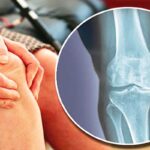
Resuming exercise after an orthopedic injury requires a thoughtful approach to regain strength, mobility, and overall fitness. Whether recovering from a fracture, surgery, or chronic condition, a well-structured exercise plan is essential for facilitating healing and preventing re-injury. This blog provides comprehensive guidelines to safely return to exercise after an orthopedic injury, ensuring individuals can achieve their fitness goals while prioritizing their health.
Understanding the Healing Process
Before resuming exercise, it’s crucial to comprehend the healing process and adhere to healthcare provider recommendations. Recovery duration and approach vary based on injury type and severity. Key phases include:
- Inflammatory Phase: Lasting a few days to a week, characterized by swelling, redness, and pain. Rest and protection of the injured area are vital.
- Repair Phase: Over several weeks, the body begins repairing damaged tissues. Controlled movements can aid healing.
- Remodeling Phase: Lasting months, where repaired tissue strengthens and adapts. Gradually reintroducing exercise and increasing intensity is crucial.
Gradual Progression and Patience
A gradual approach to resuming exercise is essential to prevent setbacks and re-injury. Follow these steps:
- Consult Your Doctor: Obtain clearance from your healthcare provider before starting any exercise program post-injury.
- Start Slow: Initiate with low-impact activities like walking, swimming, or stationary cycling to promote cardiovascular health while being gentle on joints and muscles.
- Increase Intensity Gradually: Gradually extend workout duration and intensity as tolerated, avoiding sudden increases to prevent overuse injuries.
- Listen to Your Body: Pay attention to signals such as pain, swelling, or discomfort. Cease activity if these occur, as pushing through can exacerbate injury.
Strength and Stability Exercises
Building strength and stability is crucial for preventing re-injury and restoring function. Focus on:
- Strength Training: Incorporate exercises targeting major muscle groups using light weights, gradually increasing resistance.
- Core Stability: Strengthen core muscles (abdominals, back, pelvis) with exercises like planks, bridges, and abdominal crunches.
- Balance and Proprioception: Enhance balance and coordination with exercises like single-leg stands, balance boards, and agility drills.
Flexibility and Range of Motion
Maintaining flexibility and range of motion is vital for overall function and stiffness prevention. Include:
- Stretching: Perform gentle stretches for all major muscle groups, holding each for 15-30 seconds without bouncing.
- Dynamic Stretching: Before workouts, incorporate dynamic stretches like leg swings and arm circles to warm up muscles and improve mobility.
- Yoga and Pilates: These activities promote flexibility, balance, and core strength. Begin with beginner or modified classes and progress gradually.
Cardiovascular Conditioning
Cardiovascular exercise is crucial for overall health. Opt for low-impact activities:
- Walking: A low-impact activity suitable for almost any location. Begin with short distances and gradually increase pace and duration.
- Swimming: Provides a full-body workout with minimal joint stress due to water buoyancy.
- Cycling: Both stationary and outdoor cycling improve cardiovascular health and leg strength.
Monitoring Progress and Adjustments
Track progress and make necessary adjustments:
- Set Realistic Goals: Establish achievable short-term and long-term fitness goals aligned with your recovery plan.
- Track Your Progress: Use a fitness app or journal to monitor workouts and note any discomfort, aiding in identifying patterns and making adjustments.
- Stay Consistent: Consistency is key to progress. Adhere to your exercise plan while remaining flexible to adjust based on your body’s response.
Mental and Emotional Well-being
Returning to exercise post-injury can be mentally and emotionally challenging. Address these aspects for holistic recovery:
- Stay Positive: Focus on progress and celebrate achievements to boost motivation.
- Seek Support: Connect with others who have experienced similar injuries for encouragement and advice.
- Practice Mindfulness: Incorporate mindfulness practices like meditation or deep breathing to reduce stress and enhance mental well-being.
Summary
Returning to exercise after an orthopedic injury requires a gradual, patient approach focusing on strength, stability, flexibility, and cardiovascular health. Understanding the healing process, following guidelines, and addressing mental well-being are key to safely resuming fitness routines and achieving goals. For personalized advice and treatment, consult Dr. Ashish Suryawanshi, a leading orthopedic surgeon in Thergaon, Pune, providing expert care to facilitate recovery and a return to an active lifestyle.




